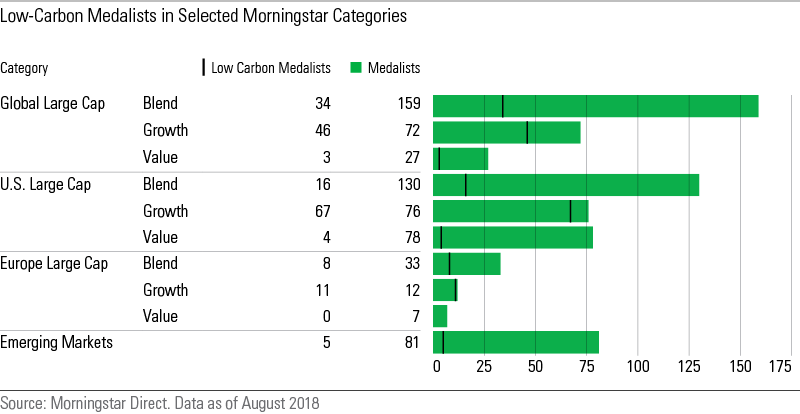The Short Answer
How Tax-Efficient Is This Fund?
Question: I am looking for funds for a taxable account. How can I tell if a fund is tax-efficient?
Answer: Morningstar.com's fund quote pages contain many useful data points for evaluating a fund's tax efficiency. We'll run through them, and give a brief explainer on how to use each one.
It also pays to remember, though, that past isn't prologue. Funds that have been tax-efficient in the past may not necessarily be great choices for taxable investors going forward. For that reason, investors in a taxable account may want to take stock of which kinds of funds are more likely to be tax-efficient choices simply due to their structure or the type of securities they invest in.
It also pays to remember, though, that past isn't prologue. Funds that have been tax-efficient in the past may not necessarily be great choices for taxable investors going forward. For that reason, investors in a taxable account may want to take stock of which kinds of funds are more likely to be tax-efficient choices simply due to their structure or the type of securities they invest in.
Before getting into the nitty-gritty of tax evaluation metrics, it's important to point out that there are certain types of funds that are more tax-efficient than others. Many index funds, especially large-cap index funds or total-market index funds that are weighted by market cap, have fairly low turnover and tend not to pay out big distributions. But you can't assume that just because it's an index fund it earns high marks for tax-efficiency: Sometimes stocks get booted out of indexes with market-cap constraints or factor exposures when the stocks no longer meet the indexes' criteria for inclusion.
Exchange-traded funds tend to be tax-efficient because of their ability to exchange securities in-kind (which doesn't result in a tax liability as a sale of the asset would). However, certain types of ETFs are more likely to make distributions (such as currency-hedged funds that employ derivatives contracts).
On the other end of the spectrum, actively managed funds that tend to have high turnover strategies, funds focusing on real-estate investment trusts, or high-yield bond funds are often a poor choice for taxable accounts because they frequently pay out income and capital gains distributions.
Most bond funds are also best kept in a tax-deferred account type, with the exception of municipal bond funds , whose income is tax-advantaged: In the vast majority of cases, the income they provide is not taxed at the federal level and, in some instances, it's not taxed at the state or local level, either. (Some muni bonds could be subject to alternative minimum tax, however.)
Most bond funds are also best kept in a tax-deferred account type, with the exception of municipal bond funds , whose income is tax-advantaged: In the vast majority of cases, the income they provide is not taxed at the federal level and, in some instances, it's not taxed at the state or local level, either. (Some muni bonds could be subject to alternative minimum tax, however.)
In addition, because traditional measures of tax efficiency are calculated by taking expenses out of income, funds with higher expense ratios can end up looking more tax-efficient, even though their aftertax return may lag that of a cheaper fund.
By clicking on a fund's tax tab on its fund quote page, you can compare a fund's aftertax return to its pretax return. We'll use Vanguard Dividend Growth (VDIGX) as an example, because it tends to be a highly requested fund quote by Morningstar.com users.
Vanguard Dividend Growth does not implicitly set out to limit investors' tax exposure, as a so-called tax-managed fund aims to do. Its prospectus states that it seeks to provide a growing stream of income over time as well as long-term capital appreciation and current income. That said, you may expect that it's not a highly tax-efficient strategy.
But you can see that it has been pretty tax-efficient nonetheless: By comparing the fund's pretax returns with its aftertax returns, you can see that there isn't a large gap. (To facilitate the comparison I created the table below using information on the performance tab—the pretax return and pretax rank in category—and the tax tab—the aftertax return, aftertax rank in category, and tax-cost ratio—of Vanguard Dividend Growth's fund quote page.)
Tax Analysis of Vanguard Dividend Growth Inv
|
|
1 Year
|
3 Years (Annualized)
|
5 Years (Annualized)
|
10 Years (Annualized)
|
|---|---|---|---|---|
| Pretax Return | 16.27 | 14.70 | 12.09 | 11.22 |
| Pretax Return Rank in Category | 49% | 67% | 57% | 46% |
| Aftertax Return | 14.51 | 13.34 | 10.76 | 10.37 |
| Aftertax Return Rank in Category | 45% | 56% | 47% | 39% |
| Tax-Cost Ratio | 1.51 | 1.19 | 1.19 | 0.77 |
Also, the fund's return “% rank in category” is higher for the fund's aftertax return that its pretax return over all trailing periods. (A rank in category of 1 is most desirable and means that the fund's return is at the top of the category, while 100 means it's at the bottom.)
One way the fund achieves this is by keeping its annual turnover low—over the past 10 years it's been in the range of 11% to 27%, which in many years is well below the average of actively managed peers in the category. Also, fund manager Donald Kilbride's focus on quality leads him to stocks that have the potential to grow their dividends over time rather than those with the highest current yields.
Another evaluation metric investors can use is the tax-cost ratio. Also found on a fund quote's tax tab, this metric measures how much a fund's annualized return is reduced by taxes investors pay on distributions.
The way it's expressed is much like an expense ratio: The lower it is, the less money the investor has surrendered to taxes. A tax-cost ratio of zero means that the fund didn't pay out any taxable distributions for the period. (Of course, that's not to say that you should buy a fund just because its tax-cost ratio is low or zero. You should also consider a fund's management, strategy, record, and fees.)
For instance, Vanguard Dividend Growth Fund's tax-cost ratio is 1.19% over the annualized five-year period. This means investors in the fund gave up 1.19% of their assets in the fund (per year) to taxes over this period.
For instance, Vanguard Dividend Growth Fund's tax-cost ratio is 1.19% over the annualized five-year period. This means investors in the fund gave up 1.19% of their assets in the fund (per year) to taxes over this period.
For instance, Vanguard Dividend Growth Fund's tax-cost ratio is 1.19% over the annualized five-year period. This means investors in the fund gave up 1.19% of their assets in the fund (per year) to taxes over this period.
Note that the tax-cost ratio is not simply the difference between the pretax return and the aftertax return. This is the formula to calculate it:
Tax-Cost Ratio = [ 1 - ( (1+Tax-adjusted Return) / (1+Pretax Return) ) ] x 100
Plugging in the five-year returns for Vanguard Dividend Growth:
Pretax Return = 12.09%
Tax-adjusted Return = 10.76%
= [ 1 - ( (1+0.1076) / (1+0.1209) ) ] x 100
= [ 1 - ( 1.1076 / 1.1209 ) ] x 100
= (1 - 0.9881) x 100
= 0.0119 x 100
= 1.19%
Aftertax returns and tax-cost ratio tell you about how tax-efficient a fund has been in the past, but neither guarantees anything about how tax-efficient a fund will be going forward.
One helpful data point that can help you size up a fund's potential for a tax hit is its potential capital gains exposure, which can also be found on the fund's tax tab. From a tax perspective, you can think of a high positive potential capital gains estimate as “a worst-case scenario.” The PCGE percentage measures all of the gains that have not yet been distributed to shareholders or taxed but could be in the event that the entire portfolio were turned over.
A positive PCGE indicates that the fund's holdings have generally increased in value, while a negative PCGE indicates that the fund has some tax losses on its books that it can carry forward to offset gains. With markets near record highs, however, most stock funds won't find themselves in this position.
The word “potential” is key here, though; a high PCGE figure doesn't always result in a big payout. If the fund doesn't sell the appreciated securities, the gain will not be realized during the calendar year—or anytime soon, for that matter. Funds with low-turnover strategies such as those that follow an index-tracking strategy are less likely to experience events that trigger high turnover, but they aren't immune from them.
Vanguard Dividend Growth's PCGE is 40.35%, indicating that about two-fifths of its holdings consist of appreciated securities that, if sold, could result in capital gains. The fund has been very tax-efficient and has had fairly low turnover in recent years, but it's not an impossibility that it could experience a manager change or be hit by large outflows—two major catalysts that can lead to increased selling and subsequent distributions.
All told, if you're an investor in a taxable account, it pays to take time to investigate and understand the strategy. Using the tax-efficiency metrics on Morningstar.com can help you make some reasonable inferences about how tax-efficient a fund has been and whether it is likely to remain so even in the worst of circumstances.
Karen Wallace does not own shares in any of the securities mentioned above. Find out about Morningstar's editorial policies.


